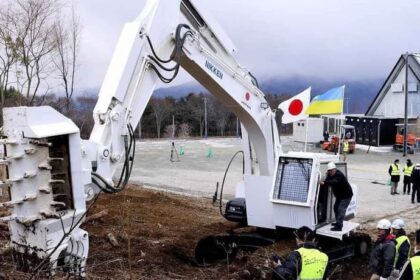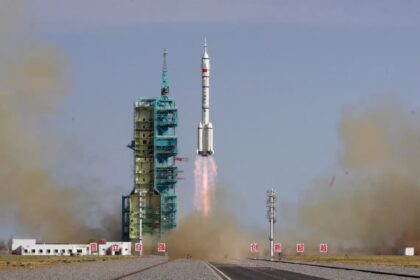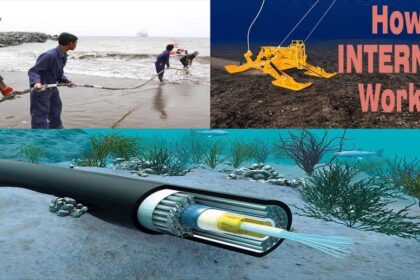Why Beijing is launching a 500 billion yuan policy tool now
Beijing is introducing a new policy based financial instrument worth 500 billion yuan, about 70 billion US dollars, to recharge project investment, back innovation and stabilize growth. The National Development and Reform Commission, the state economic planner, disclosed the program after months of planning during a period of rising trade tension and a slowing domestic investment cycle. The program is designed to supply scarce project capital, unlock new lending and steer money toward future growth engines.
- Why Beijing is launching a 500 billion yuan policy tool now
- What the instrument is and how it works
- Where the money will go
- How the funds will be deployed and who will run them
- How this tool differs from past programs
- Early deployments and what is moving first
- Potential economic impact and limits
- Risks, constraints, and oversight
- What it means for private business and banks
- Key Points
Investment momentum had cooled in mid year. Manufacturing surveys showed contraction for a sixth month in September. Fixed asset investment in the first eight months grew only 0.5 percent year on year, one of the softest readings since the pandemic period. Local governments, under pressure to resolve hidden debt since mid 2023, have struggled to assemble capital for new projects. Private investment has also been weak. The new instrument seeks to tackle these bottlenecks while building resilience against tariff shocks and external uncertainty.
What the instrument is and how it works
At its core, the instrument is a government guided, market operated vehicle that provides capital to major projects. Capital here means the equity or own funds a project must have before banks can extend large loans. By filling that first loss layer, the instrument multiplies the amount of credit the economy can absorb.
Who supplies the money
Three national policy banks will raise and manage the 500 billion yuan. They are China Development Bank, the Agricultural Development Bank of China, and the Export Import Bank of China. Funding sources include central bank pledged supplementary lending at relatively low cost and policy bank bond issuance. The money is intended for long term use, with investment horizons of 10, 15 or 20 years that match the life of large infrastructure and industrial projects.
How the leverage works
Large fixed asset projects typically require a capital ratio of 20 percent to 30 percent. If the instrument covers part of this capital, a project company can then borrow the rest from commercial banks and other financiers. Every yuan of seed capital can unlock several yuan of loans. With the full 500 billion yuan in place, analysts estimate total investment mobilized could reach between 1.5 trillion and 5 trillion yuan over several years, depending on project quality and the ability of local governments and firms to add matching funds.
Investment forms
Policy bank subsidiaries will channel the money through two main channels. One is equity investment, in which the fund takes a minority stake in a project company and exits after a set period. The other is the shareholder loan, which functions as a loan from the shareholder to the project company. A new feature will also allow these shareholder loans to flow to a parent holding group when projects have complex ownership structures. That gives more flexibility across large industrial parks and multi phase infrastructure plans.
Where the money will go
The program aims to push resources toward emerging industries, productive infrastructure and projects that support consumption. It also seeks to assist exporters that face higher tariffs and to raise China competitiveness in advanced manufacturing and services. Priority will be given to projects that are already in construction or can start by the end of the year, so the impact shows up quickly.
- Digital economy, including data infrastructure, cloud computing and network upgrades
- Artificial intelligence, from computing power to industrial applications
- Low altitude economy, including unmanned aerial systems and supporting services
- Consumption infrastructure, such as logistics hubs, cultural and sports venues, tourism facilities, health and elderly care services, and charging networks
- Green and low carbon projects, including renewable energy, grid upgrades and energy storage
- Agricultural and rural revitalization, including modern farming and cold chain logistics
- Transportation and logistics, including railways, metros, ports and inland waterways
- Municipal facilities and industrial parks, including sewage treatment, waste management and smart park upgrades
Officials also plan to steer a sizable share to private businesses alongside state investors. Out of the 500 billion yuan, about 100 billion yuan is expected to be channeled to private enterprises. That signal addresses a major pain point for the private sector, which has seen project financing tighten.
How the funds will be deployed and who will run them
The National Development and Reform Commission will coordinate project selection and policy direction. Day to day operations will sit with fund companies set up under the three policy banks. These entities will screen projects, perform due diligence and structure investments in line with market practice. They will not seek management control, which keeps decision making with the project sponsor while ensuring accountability through clear exit terms and performance thresholds.
At a press conference, NDRC spokesperson Li Chao described the mission of the new instrument. He said the money would be directed at qualified projects without delay and that the goal is to speed up project starts and construction.
Funds will be used to replenish project capital. We will work with relevant parties to quickly channel the money to specific projects, and we will urge local governments to accelerate project construction to support stable and sound economic growth.
To keep costs manageable, the central bank will provide pledged supplementary lending to the policy banks at a low rate, reported at around 2 percent for one year lending. Policy banks will add longer term bonds to scale up the pool. The blended financing cost helps projects clear viability thresholds in a period when prices and expected returns are muted.
How this tool differs from past programs
China has used similar mechanisms at stress points in the past. In 2022, a package of policy oriented funds of around 740 billion yuan helped fill financing gaps during the Covid 19 shock. Between 2015 and 2017, a special construction fund raised about 2 trillion yuan for key infrastructure. Earlier efforts focused mostly on traditional infrastructure and short term stabilization. The new round puts more weight on technology, digital infrastructure and consumption supporting projects that can lift productivity and household demand over time.
Another difference is the design of incentives. By making more use of equity and shareholder loans, the new vehicle spreads risk between the state and project sponsors and aims to crowd in commercial banks and private capital. A reserved quota for private firms is also built into the plan. The approach is fiscal in guidance yet market oriented in operation, which is intended to improve discipline in project selection.
Early deployments and what is moving first
The first disbursement has already reached a transport project in Jiangsu. The local branch of China Development Bank transferred 1.8 billion yuan to Wuxi Metro Group as part of a 3.2 billion yuan package for the Wuxi Yixing intercity railway. Early payouts to shovel ready transport links are common in large stimulus undertakings because construction schedules and approvals are clear, which helps deliver near term workload and jobs.
Across provinces, planning departments are compiling project lists and refining funding plans. Officials have said projects already under construction or able to start by year end will get priority. Counties and prefecture level cities have held special meetings to prepare reserve projects and improve documentation, aiming to shorten the time from approval to first drawdown.
Potential economic impact and limits
By addressing the capital bottleneck, the instrument can raise the ratio of viable projects in local pipelines. If half of a typical project capital base is supplied by the new funds, equity capacity would expand in a way that lifts bank lending and corporate borrowing. Estimates cited by large investment banks point to roughly 4 trillion yuan in additional loans over three to five years and as much as 5 trillion yuan in fixed asset investment once matching funds arrive. That scale would add lift to total social financing and to the growth of corporate medium and long term loans, which banks have struggled to expand in a weak economy.
Another channel is through money supply. If project funds flow through corporate demand deposits, a pickup in the M1 measure could help ease deflationary pressure. A modest rise in investment related demand, when combined with steady improvement in consumer spending, could steady prices without overheating. Achieving that balance will depend on project quality, procurement discipline and the speed at which private firms re engage.
There are limits. Local governments need to commit matching funds and provide land, permits and utilities. Many have tight budgets after years of pandemic support and efforts to restructure hidden debt. Commercial banks must also be willing to lend, which hinges on cash flow forecasts that are credible. Those constraints suggest the mobilization effects could come through in waves rather than all at once.
Risks, constraints, and oversight
Local fiscal stress and the drive to manage hidden debt have made officials cautious. Some regions face a shortage of feasible projects that can repay loans on their own merits. Falling prices across parts of the industrial chain have compressed expected returns, which can make a marginal project look unviable. These conditions increase the value of rigorous screening and phased disbursement tied to milestones.
Program design contains several guardrails. Shareholder loans place more risk on project owners rather than on lenders, which discourages overbuilding. Equity stakes will generally be minority positions with time bound exits, forcing project sponsors to plan for a return path. The NDRC will set investment directions and coordinate across ministries so that sector priorities are clear and so that duplicative projects are limited. Local governments will be urged to accelerate approvals yet maintain compliance with debt rules.
Transparency around selection and reporting will matter for public trust. Clear disclosure on investment portfolios, expected returns and exit plans can help draw in private co investors. Over time, successful exits can recycle funds into new rounds without a larger budget outlay, which expands the reach of the instrument.
Policy researchers involved in investment planning view the instrument as a catalyst for both infrastructure and new industry. Wu Yaping, a researcher at the NDRC Institute of Investment, explained the dual focus in comments to media.
The instrument is expected to mainly support emerging industries and infrastructure projects. With supportive factors in place, infrastructure investment can rebound in the second half and continue to play a stabilizing role in the economy.
What it means for private business and banks
The reserved slice for private enterprises is meaningful. Many private manufacturers and service providers have struggled to secure long tenor funding for expansion, especially in sectors targeted by tariffs or with high upfront capital needs like computing power, advanced materials and logistics technology. With policy bank funds entering as equity or as shareholder loans, these firms can meet capital adequacy thresholds and then tap commercial bank credit on better terms.
For banks, the pipeline of long duration projects could ease the shortage of quality assets. Medium and long term corporate loans have been a weak link as firms pay down debt and delay expansion. A larger pool of investable projects can support healthier interest margins and reduce the share of short duration lending. On the bond side, greater policy bank issuance will add safe assets to the market that are widely held by institutions, which can help anchor liquidity conditions while the central bank calibrates its tools.
The mix of projects, skewed more toward technology, data infrastructure and consumption related facilities, could also support a gradual rebalancing toward domestic demand and higher value added production. Projects that boost household facing services, like transit upgrades and cultural venues, can lift spending, while digital and green investment can raise productivity in industry.
Key Points
- China is launching a policy based financial instrument worth 500 billion yuan to replenish project capital and unlock new lending
- Three policy banks will raise and deploy the funds through equity and shareholder loans with long term horizons
- Money will target eight areas including digital economy, artificial intelligence, low altitude aviation, consumption infrastructure and green projects
- About 100 billion yuan is expected to go to private enterprises to ease financing constraints
- Early funds have reached the Wuxi Yixing intercity railway, with priority for projects ready to start this year
- Analysts see total mobilized investment of 1.5 trillion to 5 trillion yuan over several years, depending on matching funds and bank appetite
- Local debt stress, weak private investment and project quality are key constraints that could slow the pace
- Officials say the tool is market oriented in operation and different from past programs by emphasizing new growth drivers












